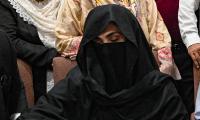There is no end in sight for the longstanding Kashmir conflict. A new generation is set to consume itself in an endless war that has fuelled desperation and frustration.
This imbroglio is brewing a deeply entrenched wrath in the hearts and minds of Kashmiris. The youth of Kashmir have become the face of insurgency in Indian Occupied Kashmir. The fresh wave of unrest has once again made the Kashmir issue a flashpoint. The atrocious human rights violations by the Indian security forces and an outright attempt to quash the insurgency has proved to be counterproductive.
The use of brutal force has miserably failed to deter and coerce the unarmed youth of Kashmir. Unabated protests, furious demonstrations and stone-throwing have become a ubiquitous phenomenon in the valley and the adjacent areas. The traditional dynamics of the Kashmir dispute are no longer viable.
The Kashmir issue is languishing in the UN as the oldest yet unresolved dispute. This issue has erupted as the conflict of decolonisation. The onus of resolving the dispute lies with the British as their hasty departure from the Subcontinent marked the volatile trajectory of the Kashmir issue. The forcible occupation of the state of Jammu and Kashmir by Indian forces revamped the essential notion of the dispute. The rivalry between India and Pakistan became the definitional aspect of the Kashmir dispute and overshadowed the plight of Kashmiris and their right to self-determination that was pledged under the Security Council resolution.
The genealogical development of this dispute can be traced along with different phases. The issue underwent certain transformations. Until 1973, the Kashmir issue remained internationalised. The UN resolutions, with all their concomitant legalities, failed to strike a solution. The end of the 1971 war and the inking of the Simla Agreement between India and Pakistan made it a largely regional and bilateral matter.
This agreement became a prelude for the Line of Control. The year 1987 marked a new shift in the ever-prolonged Kashmir imbroglio where the alleged rigging in the state elections of Jammu and Kashmir served as an impetus to a militant struggle. This violent struggle persisted till 2001 when 9/11 changed the cobweb of geopolitics with the American invasion in Afghanistan.
The Kashmir issue stood dormant. But embers of discontent remained smouldering where sporadic eventualities triggered the noticeable upheavals. For instance, the land allocation to the Amarnath Temple and the discovery of mass graves in Kashmir led to furious backlashes. The issue took a quantum leap forward in 2016 following the martyrdom of Burhan Wani. This provoked an outburst of rage and fury in Indian Occupied Kashmir, which persists with an unstinted momentum. To date, nearly 100,000 Kashmiris have died in this struggle.
If we look at the Kashmir dispute through a holistic prism, there are four dominant themes and perspectives. These include the international significance of this quagmire, the blatant violation of human rights, the relational discourse of India and Pakistan and the will and aspirations of the Kashmiris.
Diverging academic and intellectual perspectives can be proffered on the role of the youth in the apparent wave of freedom. Yet the hyper-nationalist Indian media has also been forced to acknowledge the newly-emerging dynamics of the Kashmir issue that have a primary focus on the role of youth.
The stringency of the situation is beyond alarming. International media outlets have also started reporting the excessive human rights violations. For instance, the highly condemnable event of a Kashmiri being tied up to jeep and paraded through streets was reported by BBC and The New York Times. A heart-rending picture of a child mourning over the death of his friend attracted global attention for quite sometimes.
The geometry of conflict is an incessant phenomenon in the modern world of realpolitik. There had been many territorial disputes among the countries in the near and distant past. Even today, many countries have been held hostage to countless territorial disputes. The Anglophone and Francophone rivalry had been an impinging factor in defining the contours of relations of many countries. Britain and Argentina have a longstanding dispute over the Falkland Islands, Britain and China continue to have rows over Hong Kong while Armenia and Azerbaijan are embroiled in a conflict over Nagorno-Karabakh.
Nevertheless, the most ironic undercurrent of the Kashmir dispute is its violent trajectory. In a world where human rights have almost become cosmopolitan values and the matrix of global politics is undergoing an inexplicable phenomenon of human rights interventions, the Kashmir issue has tragically endured over time.
The Kashmir issue should once again be seen as an international issue and a humanitarian crisis. The Kashmir dispute is neither a territorial dispute nor a religious one. It is the unfinished agenda of Partition. The onus is on the international community for its peaceful resolution. Human rights violations must end in Kashmir and Kashmiris must be recognised as a party to resolving the dispute.
The writer is a faculty member at Quaid-e-Azam University, Islamabad.
Email: rajaqaiserahmed@gmail.com
A representational image showing residents walking at a wholesale market in Karachi. — AFP/FileOnce again there is...
A representational image showing late Pakistani human rights activist and Supreme Court lawyer Asma Jahangir. —...
A representational image showing a security personnel sanding guard beside a ship carrying containers at Gwadar port....
A health worker administers polio vaccine drops to a child during a door-to-door polio vaccination campaign in Lahore,...
Armed militants of the banned Tehreek-e-Taliban Pakistan pose for a photograph in Orakzai Agency. —...
An aeroplane of the national flag carrier of Pakistan is seen in this file photo. — AFPWhile Pakistan considers...







